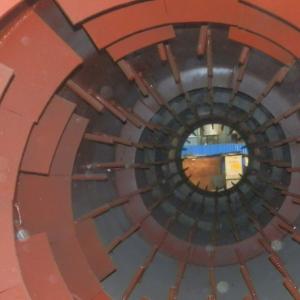
Add to Cart
Rotary Drying and cooling Use in Sugar Production
Drying and cooling of sugar is one of the special applications where Ingetecsa has a sound reputation. Our first sugar dryer reference goes back to early last century.
It started when we supplied the first beet pulp rotary drum dryers. Not much later we installed the first crystal sugar dryer, the rotary dryer drums. Over the years we gained decades of experience with sugar cane and sugar beet where our clients and we still benefit from.
PROCESS OVERVIEW
Table sugar can have two origins: either from sugar beet or from sugar cane. It is based on sucrose (saccharose). Regardless of the raw material, both processes are in principle almost the same.
After cleaning and sorting the raw material, the sucrose is extracted by cooking the sugar beet or by pressing the sugar cane. This creates two distinctive flows: the sugar juice and the cane fibres or beet pulp flow, depending on the source.
SUGAR JUICE
The sugar juice, rich in sucrose, is further refined and purified. It is then followed by the crystallisation and the centrifuging steps. The dewatered crystals from the centrifuge require drying and cooling. After cooling follows packing, storage, and transport.
Both drying and cooling stages are key process steps that determine the required appearance, functionality, and flow-ability of the final sugar crystal. It is the reason why these process steps receive so much attention.
SUGAR CRYSTAL REQUIREMENTS
Of paramount importance during drying and cooling is preventing water occlusion in the crystal. Furthermore, the creation of the crystal brilliance and its shiny look.
Lastly, crystals must be treated carefully in order not to damage the edges by mechanical impact.
ROTARY DRUM
A counter-current rotary drum is used for drying of the sugar crystals.
Most commonly used for the drying step is the rotary drum. The counter current drying process works best for controlled evaporation speed and so to avoid water occlusions. The rotary drum creates the ideal conditions for this process step: it allows the sugar crystals to slowly dry while the syrup adhering to the crystal surface undergo crystallisation. That is a process step which takes time. Actually, the last step of the crystallisation phase occurs in the cooler, not in the dryer.
BENEFITS ROTARY DRUM DRYER
A rotary drum as sugar dryer has several advantages both mechanically as well as process wise:
≡ A robust and an uncomplicated process
≡ Non sticky behaviour
≡ Efficient use of energy
≡ Available in stainless steel
≡ Ideal for bulk flows with variance in feed stock
CHANGE OF TECHNOLOGY
For a long time it has been common practice to use a rotary drum cooler after the rotary drum dryer. The cooler also operates in counter current mode for the same reasons as for the dryer: it provides the best controllable process conditions for the sugar crystals.
While there is no doubt the rotary drum dryer is still the preferred technology for the drying step, concerns were raised about the rotary drum cooler.
Crystals in the fluidised bed cooler erode less, resulting in a more shiny, brilliant crystal while separating the fines from the process at the same time.
A different technology had to be found that would address this problem.
In close cooperation with sugar manufacturers, Ingetecsa has been able to demonstrate that the optimum process equipment arrangement is a combination of a rotary drum and a static fluidised bed technology. This resulted in a sugar crystal that met the latest strictest requirements in terms of:
≡ crystal brilliance
≡ shiny crystal appearance
≡ minimum particle damage
The combination of the rotary drum dryer with the fluidised bed cooler, offers the best of both worlds: energy efficient, reliable equipment, flexible in feed stock variance and gentle crystal polishing.